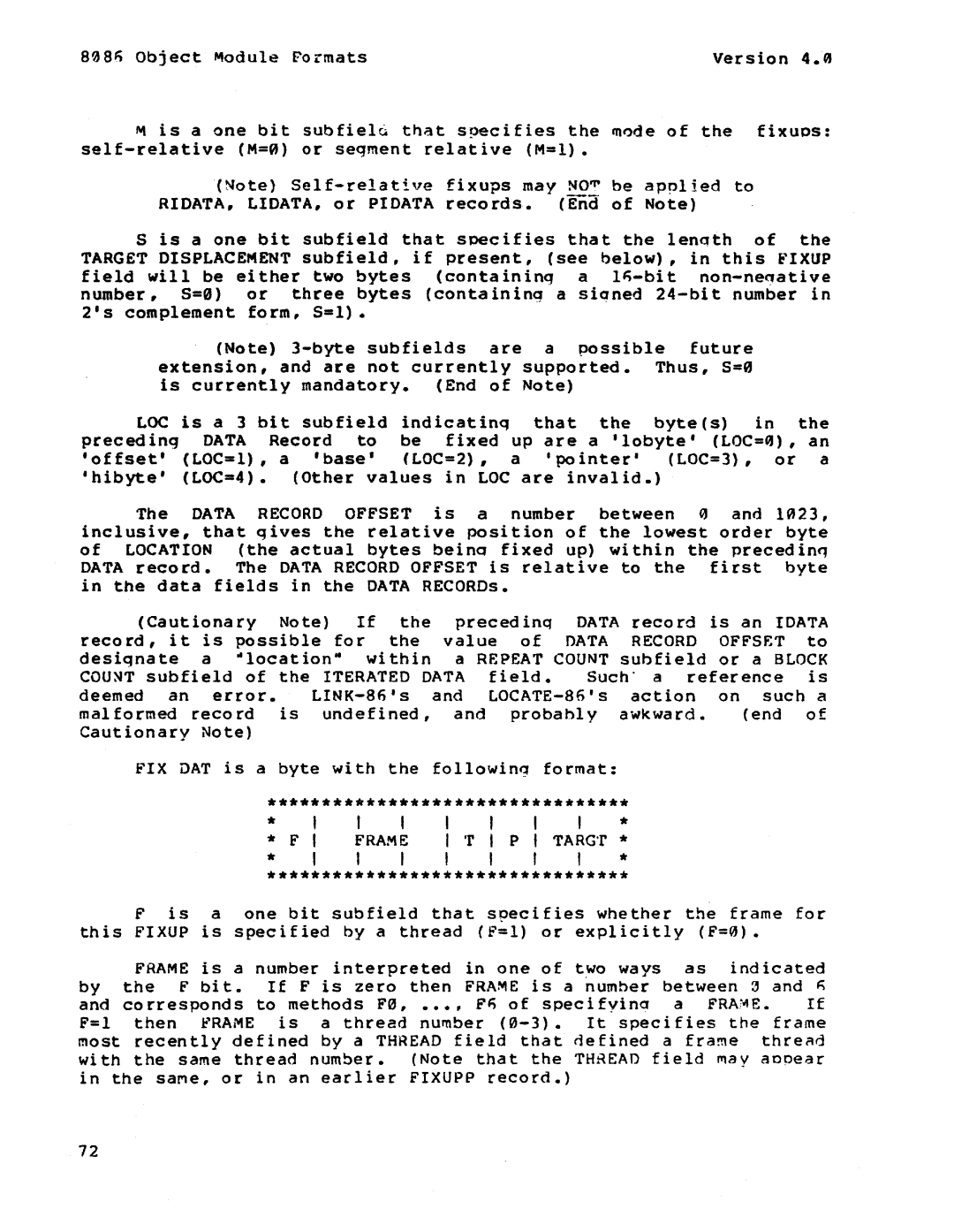
808~ Object Module Formats | Version 4.8 |
M is a one bit subfielG that sgecifies the mode of the fixUDS:
(~ote)
RIDATA, LICATA, or PIDATA records. (End" of Note)
S is a one bit subfield that specifies that the lenoth of the TARGET DISPLACEMENT subfield, if present, (see below), in this FIXUP field will be either two bytes (containing a
number, 5=0) or three bytes (containing a sioned
(Note)
is currently mandatory. (End of Note)
LOC is a 3 bit subfield indicatinq that the byte(s) in the preceding DATA Record to be fixed up are a 'lobyte' (LOC=~), an
'of fset' (LOC=l), a • base' (LOC=2), a • po inter' (LOC=3), or a
'hibyte' (LOC=4). (Other values in LOC are invalid.)
The DATA RECORD OFFSET is a number between 0 and 1023, inclusive, that gives the relative position of the lowest order byte
of LOCATION (the actual bytes beina fixed up) within the precedinq DATA record. The DATA RECORD OFFSET is relative to the first byte in the data fields in the DATA RECORDs.
(Cautionary Note) If the precedinq DATA record is an IDATA record, it is possible for the value of DATA RECORD OFFS~T to designate a ~locationH within a REPEAT COUNT subfield or a BLOCK
COU~T subfield of the ITERATED DATA field. Such" a reference is
deemed an error.
mal formed reco rd is undefined, and probabl y awkward. (end of Cautionary Note)
FIX DAT is a byte with the following format:
*********************************
* | , | I | , | I | I | I | , | * |
* | F I | FRAME | I TIP I TARGT * | |||||
* | I | I | I | I | I | r | I | * |
*********************************
Fis a one bit subfield that specifies whether the frame for this FIXUP is specified by a thread (F=l) or explicitly (F=~).
FRAME is a number interpreted in one of two ways as indicated
by the F bit . If F is zero then FRAME is a number between J and h and corresponds to methods F~, •••• F~ of specifyina a FRA~E. If
F=l then PRAME is a thread number
with the same thread number. (Note that the THREAD field ~ay aopear in the saMe, or in an earlier FIXUPP record.)
72
